Archives
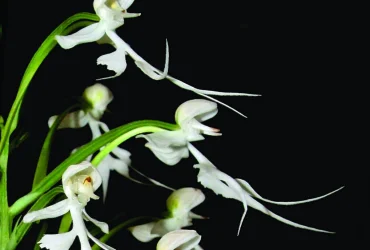 v7i2.177
v7i2.177ISSN: 1800-427X (print)
eISSN: 1800-427X (online)
DOI:10.47605/tapro.v7i2.177
Submitted date: 8 December 2014
Accepted date: 30 December 2014
Published date: 20 February 2015
Pp. 105–106.
On abnormal leaves in Chlorophytum borivilianum (Asparagaceae)
S.K. Sharma*
*Corresponding author. E-mail: sksharma56@gmail.com
Chlorophytnum borivilianum Santapau ex R.R. Fern. is a perennial geophyte that perennates with the help of tubers. The digitate sessile tubers are born on the undersurface of a discoid stem. A cluster of 10–17 leaves is produced by the perennating stem with the onset of the monsoon or just few days before onset of the monsoon. Generally one flowering scape is produced by the each plant. However, on occasions more than one scape may also be produced by an individual plant. This is an important medicinal species which is confined mainly to the southern part of the state of Rajasthan.
Section Editor: James L. Reveal
eISSN: 1800-427X (online)
DOI:10.47605/tapro.v7i2.177
Submitted date: 8 December 2014
Accepted date: 30 December 2014
Published date: 20 February 2015
Pp. 105–106.
On abnormal leaves in Chlorophytum borivilianum (Asparagaceae)
S.K. Sharma*
*Corresponding author. E-mail: sksharma56@gmail.com
Chlorophytnum borivilianum Santapau ex R.R. Fern. is a perennial geophyte that perennates with the help of tubers. The digitate sessile tubers are born on the undersurface of a discoid stem. A cluster of 10–17 leaves is produced by the perennating stem with the onset of the monsoon or just few days before onset of the monsoon. Generally one flowering scape is produced by the each plant. However, on occasions more than one scape may also be produced by an individual plant. This is an important medicinal species which is confined mainly to the southern part of the state of Rajasthan.
Section Editor: James L. Reveal
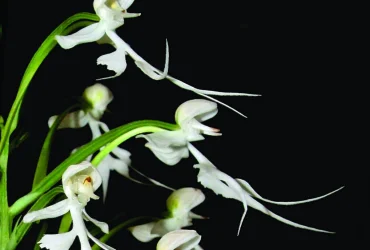 v7i2.176
v7i2.176ISSN: 1800-427X (print)
eISSN: 1800-427X (online)
DOI:10.47605/tapro.v7i2.176
Submitted date: 15 July 2014
Accepted date: 28 July 2014
Published date: 20 February 2015
Pp. 103–104, Pl. 11.
Elaeocarpus aristatus (Elaeocarpaceae): New for southern India
D.F. Irudhyaraj & R. Raju*
*Corresponding author. E-mail: racprabha@yahoo.com
Species of Elaeocarpus L. (Elaeocarpaceae Juss.) are characteristically trees or shrubs distributed from Madagascar in the west to Fiji and Hawaii in the east; of the some 350 recognized species, the greatest concentration of species is found in Borneo and New Guinea. Most species of Elaeocarpus are large to medium-sized trees with buttressed root (in mature individuals) bearing raceme inflorescences with beautiful, fragrant flowers. Many species of Elaeocarpus are economically important as a source of timber, edible fruits, decorative seeds, and even as medicinals. Out of the some 120 species reported from Asia, 25 occur in India. In India, the species of Elaeocarpus are confined mostly to northeastern and southern India with a few species restricted to the Andaman and Nicobar islands. Six species, viz. E. blascoi Weibel, E. gaussenii Weibel, E. glandulosus Wall. ex Merr., E. munroii Mast., E. recurvatus Corner, and E. venustus Bedd. are endemic to southern peninsular India.
Section Editor: James L. Reveal
eISSN: 1800-427X (online)
DOI:10.47605/tapro.v7i2.176
Submitted date: 15 July 2014
Accepted date: 28 July 2014
Published date: 20 February 2015
Pp. 103–104, Pl. 11.
Elaeocarpus aristatus (Elaeocarpaceae): New for southern India
D.F. Irudhyaraj & R. Raju*
*Corresponding author. E-mail: racprabha@yahoo.com
Species of Elaeocarpus L. (Elaeocarpaceae Juss.) are characteristically trees or shrubs distributed from Madagascar in the west to Fiji and Hawaii in the east; of the some 350 recognized species, the greatest concentration of species is found in Borneo and New Guinea. Most species of Elaeocarpus are large to medium-sized trees with buttressed root (in mature individuals) bearing raceme inflorescences with beautiful, fragrant flowers. Many species of Elaeocarpus are economically important as a source of timber, edible fruits, decorative seeds, and even as medicinals. Out of the some 120 species reported from Asia, 25 occur in India. In India, the species of Elaeocarpus are confined mostly to northeastern and southern India with a few species restricted to the Andaman and Nicobar islands. Six species, viz. E. blascoi Weibel, E. gaussenii Weibel, E. glandulosus Wall. ex Merr., E. munroii Mast., E. recurvatus Corner, and E. venustus Bedd. are endemic to southern peninsular India.
Section Editor: James L. Reveal
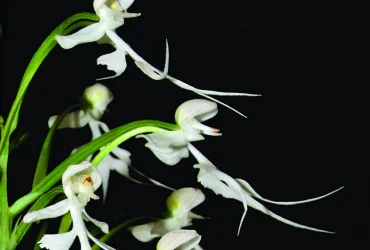 v7i2.175
v7i2.175ISSN: 1800-427X (print)
eISSN: 1800-427X (online)
DOI:10.47605/tapro.v7i2.175
Submitted date: 11 June 2014
Accepted date: 27 July 2014
Published date: 20 February 2015
Pp. 101–102.
Rediscovery of Aeginetia indica L. (Orobanchaceae) from Meegahakiula, Sri Lanka after 125 years
S.P. Ekanayake, S. Jayarathne, S. Harischandra, S. Karunarathne, B. Weerakoon, K. Mahagedara, A. Thudugala & K.B. Ranawana
*Corresponding author. E-mail: sekanayake@gmail.com
Aeginetia indica L. (Orobanchaceae) is an herbaceous annual plant that lacks leaves and is parasitic on roots of monocots, especially grasses. The species is rare and declining throughout its range. In Sri Lanka it has a Redlist status of CR status. A small population of Aeginetia indica was discovered during botanical explorations while collecting and cataloguing plants in the village of Kalugahakandura, Meegahakivula District Secretariat Division of Badulla District, in December 2013. At that time, six mature individuals of Aeginetia indica were recorded in a small area approximately one square meter on a steep road-side forest floor (07°0606.19N, 81°0458.63E). Taxonomic identity was determined by comparison with specimens at the National Herbarium, Peradeniya, Sri Lanka, by submitting a voucher specimen (Reference No. 6/01/H/03) to the National Herbarium.
Section Editor: James L. Reveal
eISSN: 1800-427X (online)
DOI:10.47605/tapro.v7i2.175
Submitted date: 11 June 2014
Accepted date: 27 July 2014
Published date: 20 February 2015
Pp. 101–102.
Rediscovery of Aeginetia indica L. (Orobanchaceae) from Meegahakiula, Sri Lanka after 125 years
S.P. Ekanayake, S. Jayarathne, S. Harischandra, S. Karunarathne, B. Weerakoon, K. Mahagedara, A. Thudugala & K.B. Ranawana
*Corresponding author. E-mail: sekanayake@gmail.com
Aeginetia indica L. (Orobanchaceae) is an herbaceous annual plant that lacks leaves and is parasitic on roots of monocots, especially grasses. The species is rare and declining throughout its range. In Sri Lanka it has a Redlist status of CR status. A small population of Aeginetia indica was discovered during botanical explorations while collecting and cataloguing plants in the village of Kalugahakandura, Meegahakivula District Secretariat Division of Badulla District, in December 2013. At that time, six mature individuals of Aeginetia indica were recorded in a small area approximately one square meter on a steep road-side forest floor (07°0606.19N, 81°0458.63E). Taxonomic identity was determined by comparison with specimens at the National Herbarium, Peradeniya, Sri Lanka, by submitting a voucher specimen (Reference No. 6/01/H/03) to the National Herbarium.
Section Editor: James L. Reveal
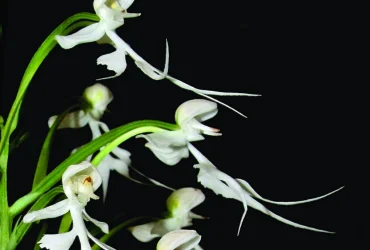 v7i2.174
v7i2.174ISSN: 1800-427X (print)
eISSN: 1800-427X (online)
DOI:10.47605/tapro.v7i2.174
Submitted date: 4 September 2014
Accepted date: 15 November 2014
Published date: 20 February 2015
Pp. 99–100, Pls. 8–10.
The lectotypification of Syzygium occidentale (Bourd.) Gandhi (Myrataceae)
S.M. Shareef *
*Corresponding author. E-mail: smshariftbgri@gmail.com
Based on two collections from the banks of the Periyaur (=Periyar) River in North Travancore, Bourdillon (1904) described and illustrated Eugenia occidentalis Bourd (Myrtaceae). Gamble (1919) transferred it to Jambosa, as J. occidentale (Bourd.) Gamble. Gandhi (1976) later proposed Syzygium occidentale (Bourd.) Gandhi. Neither Bourdillon nor subsequent authors designate a lectotype from among the two syntypes preserved at K nor did any author declare the published figure as the lectotype. Among the syntypes, K!, barcode no. 000793886, was used by Bourdillon for the diagnosis and illustration of E. occidentalis and hence this specimen is here designated as the lectotype.
Section Editor: James L. Reveal
eISSN: 1800-427X (online)
DOI:10.47605/tapro.v7i2.174
Submitted date: 4 September 2014
Accepted date: 15 November 2014
Published date: 20 February 2015
Pp. 99–100, Pls. 8–10.
The lectotypification of Syzygium occidentale (Bourd.) Gandhi (Myrataceae)
S.M. Shareef *
*Corresponding author. E-mail: smshariftbgri@gmail.com
Based on two collections from the banks of the Periyaur (=Periyar) River in North Travancore, Bourdillon (1904) described and illustrated Eugenia occidentalis Bourd (Myrtaceae). Gamble (1919) transferred it to Jambosa, as J. occidentale (Bourd.) Gamble. Gandhi (1976) later proposed Syzygium occidentale (Bourd.) Gandhi. Neither Bourdillon nor subsequent authors designate a lectotype from among the two syntypes preserved at K nor did any author declare the published figure as the lectotype. Among the syntypes, K!, barcode no. 000793886, was used by Bourdillon for the diagnosis and illustration of E. occidentalis and hence this specimen is here designated as the lectotype.
Section Editor: James L. Reveal
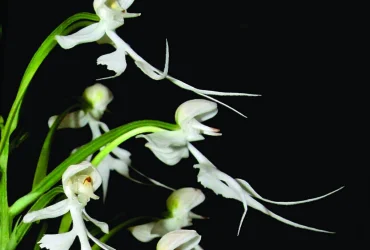 v7i2.173
v7i2.173ISSN: 1800-427X (print)
eISSN: 1800-427X (online)
DOI:10.47605/tapro.v7i2.173
Submitted date: 21 April 2014
Accepted date: 14 October 2014
Published date: 20 February 2015
Pp. 98, Pl. 7.
Leptolejeunea epiphylla (Lejeuneaceae): An addition to the Western Ghats
K.C. Kariyappa & A.E.D. Daniels*
*Corresponding author. E-mail: dulipdaniels@yahoo.co.uk
During a bryophyte survey, Leptolejeunea epiphylla was collected at Mundanthurai and Palode in the Western Ghats, India. In both localities it was found to inhabit the leaves of Arenga wightii Griff., an endemic, understorey palm, commonly seen in evergreen and riparian forests of the southern Western Ghats. This record is an addition to the liverwort flora (especially to the epiphyllous flora) of the Indian mainland because in India, this species was so far known only from the Andaman and Nicobar Islands. It is one among the 11 species of Leptolejeunea (Spruce) Schiffn so far known to occur in India . The species is briefly described and illustrated, and its distribution is mapped.
Section Editor: William R. Buck
eISSN: 1800-427X (online)
DOI:10.47605/tapro.v7i2.173
Submitted date: 21 April 2014
Accepted date: 14 October 2014
Published date: 20 February 2015
Pp. 98, Pl. 7.
Leptolejeunea epiphylla (Lejeuneaceae): An addition to the Western Ghats
K.C. Kariyappa & A.E.D. Daniels*
*Corresponding author. E-mail: dulipdaniels@yahoo.co.uk
During a bryophyte survey, Leptolejeunea epiphylla was collected at Mundanthurai and Palode in the Western Ghats, India. In both localities it was found to inhabit the leaves of Arenga wightii Griff., an endemic, understorey palm, commonly seen in evergreen and riparian forests of the southern Western Ghats. This record is an addition to the liverwort flora (especially to the epiphyllous flora) of the Indian mainland because in India, this species was so far known only from the Andaman and Nicobar Islands. It is one among the 11 species of Leptolejeunea (Spruce) Schiffn so far known to occur in India . The species is briefly described and illustrated, and its distribution is mapped.
Section Editor: William R. Buck
Hubungi Kami
The ultimate aim of the journal is to provide an effective medium for communication of the latest and best scientific information.
Copyright © 2020 Taprobanica. All Rights Reserved
Jasa Pembuatan Website by IKT




